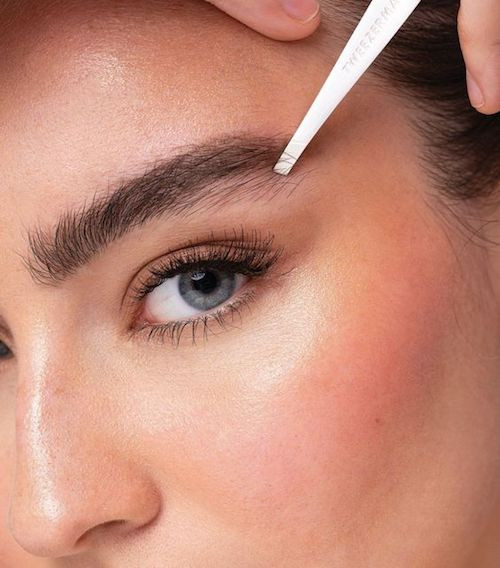Does Electrolysis Hurt More Than A Tattoo? Understanding the pain levels of different cosmetic procedures is essential, and at tattooat.com, we aim to provide accurate and reliable information. Electrolysis, a permanent hair removal method, and tattoos, forms of body art, both involve discomfort, but their pain profiles differ significantly.
Electrolysis and tattooing involve distinct types of pain. This guide from tattooat.com dives into the nuances of both procedures to help you make an informed decision. Explore tattoo pain, hair removal options, and tattoo aftercare with us.
Table of Contents
1. What Does Electrolysis Involve?
2. What Happens During a Tattoo Session?
3. Electrolysis vs. Tattoo Pain: A Detailed Comparison
4. Factors Influencing Pain Perception
5. Managing Pain During Electrolysis
6. Managing Pain During Tattooing
7. Aftercare and Healing: Electrolysis
8. Aftercare and Healing: Tattoos
9. Long-Term Effects and Maintenance
10. Personal Experiences and Testimonials
11. Electrolysis vs Tattoo Pain: FAQs
1. What Does Electrolysis Involve?
1.1. Electrolysis: The Science Behind Permanent Hair Removal
Electrolysis is a permanent hair removal method that involves inserting a thin wire into the hair follicle beneath the skin’s surface. An electric current is then passed through the wire, destroying the hair follicle’s ability to produce new hair. According to the American Electrology Association, electrolysis is the only FDA-approved method for permanent hair removal.
1.2. Types of Electrolysis Techniques
There are three primary methods of electrolysis:
- Galvanic Electrolysis: Uses a chemical reaction to decompose the hair follicle.
- Thermolysis Electrolysis: Employs heat to destroy the hair follicle.
- Blend Electrolysis: A combination of both galvanic and thermolysis methods.
Each technique varies slightly in its approach, but the goal remains the same: permanent hair removal.
1.3. Common Areas Treated with Electrolysis
Electrolysis can be used on almost any area of the body, with the most common treatment locations including:
- Face (upper lip, chin, eyebrows)
- Underarms
- Bikini line
- Legs
Because electrolysis targets individual hair follicles, it’s a versatile option for both small and large areas.
1.4. Why Choose Electrolysis for Hair Removal?
Electrolysis stands out as a permanent solution, unlike temporary methods such as waxing, shaving, or hair removal creams. According to a study published in the Journal of the American Academy of Dermatology, electrolysis has a high success rate in achieving permanent hair reduction. This makes it an appealing option for those seeking a long-term solution to unwanted hair.
2. What Happens During a Tattoo Session?
2.1. The Tattooing Process Explained
Getting a tattoo involves using a tattoo machine with needles that repeatedly puncture the skin, depositing ink into the dermis layer. The dermis, located below the epidermis (outer layer of skin), is where the ink remains permanently. A skilled tattoo artist will create a design by carefully following a stencil or freehand drawing.
2.2. Types of Tattoo Styles and Their Impact on Pain
Different tattoo styles can influence the level of discomfort experienced. For example:
- Fine-line tattoos: May be less painful due to smaller needle groupings.
- Shading-heavy tattoos: Can cause more discomfort due to prolonged exposure.
- Color-packed tattoos: Might require more passes, increasing pain.
According to Inked Magazine, the technique and skill of the tattoo artist also play a significant role in minimizing pain.
2.3. Popular Tattoo Locations and Pain Levels
Certain areas of the body are known to be more sensitive to tattooing. Common high-pain areas include:
- Ribs
- Spine
- Head
- Feet
- Hands
Areas with more fat or muscle, such as the thighs or upper arms, generally experience less pain.
2.4. Why Choose Tattooing for Body Art?
Tattooing is a form of self-expression and body art that allows individuals to display meaningful symbols, designs, or artwork on their skin. Tattoos can represent personal stories, cultural heritage, or simply aesthetic preferences. Unlike other forms of body modification, tattoos are generally permanent, making them a significant and lasting form of self-expression.
 Electrolysis vs Tattoo
Electrolysis vs Tattoo
Electrolysis or tattoo?
3. Electrolysis vs. Tattoo Pain: A Detailed Comparison
3.1. Nature of Pain: Electrolysis
The pain associated with electrolysis is often described as a quick, stinging sensation. Because each hair follicle is treated individually, the pain is intermittent and localized. Many people compare it to a brief, sharp pinch.
3.2. Nature of Pain: Tattoos
Tattoo pain is generally described as a more prolonged, dull ache. The sensation can vary depending on the tattoo’s location, size, and style. Some people describe it as a burning or scratching feeling.
3.3. Intensity and Duration: Electrolysis
Electrolysis sessions can last anywhere from 15 minutes to over an hour, depending on the size of the area being treated. The intensity of pain tends to be higher during the initial sessions but may decrease as hair follicles are weakened.
3.4. Intensity and Duration: Tattoos
Tattoo sessions can range from a few hours to multiple sessions spanning several days. The pain intensity can fluctuate throughout the session, with some areas feeling more sensitive than others. The overall discomfort is generally more sustained compared to electrolysis.
3.5. Pain Scale Comparison
On a pain scale of 1 to 10:
- Electrolysis: Typically ranges from 3 to 7, depending on the individual’s pain tolerance and the area being treated.
- Tattoos: Can range from 4 to 8, with more sensitive areas reaching higher levels of pain.
3.6. Which is More Painful?
While individual experiences vary, most people find electrolysis to be more painful in terms of intensity, but the pain is short-lived. Tattoos, on the other hand, involve a more prolonged and sustained level of discomfort.
4. Factors Influencing Pain Perception
4.1. Individual Pain Tolerance
Pain tolerance varies significantly among individuals. Factors such as genetics, psychological state, and previous experiences can influence how pain is perceived.
4.2. Skin Sensitivity
Areas with thinner skin and more nerve endings tend to be more sensitive. For electrolysis, the upper lip and bikini line are often cited as particularly sensitive areas. For tattoos, bony areas like the ribs and spine are known to be more painful.
4.3. Anxiety and Stress Levels
Anxiety and stress can amplify pain perception. Being relaxed and mentally prepared can help reduce discomfort during both electrolysis and tattoo sessions.
4.4. Use of Numbing Agents
Topical numbing creams containing lidocaine can significantly reduce pain during both procedures. According to a study in the Journal of Drugs in Dermatology, lidocaine creams are effective in minimizing discomfort during cosmetic procedures.
4.5. Technician’s Skill and Technique
The skill and technique of the electrologist or tattoo artist can significantly impact the level of pain experienced. Experienced professionals are often able to minimize discomfort through efficient and precise techniques.
 Plucking or Tweezing
Plucking or Tweezing
Tweezing Eyebrows
5. Managing Pain During Electrolysis
5.1. Topical Anesthetics
Applying a topical numbing cream containing lidocaine 30-60 minutes before the electrolysis session can help reduce pain. Ensure the skin is clean and the cream is applied thickly under an occlusive dressing (such as plastic wrap) for optimal absorption.
5.2. Over-the-Counter Pain Relievers
Taking an over-the-counter pain reliever, such as ibuprofen or acetaminophen, before the session can help manage discomfort. Always follow the recommended dosage.
5.3. Relaxation Techniques
Practicing relaxation techniques, such as deep breathing or meditation, can help reduce anxiety and lower pain perception.
5.4. Communication with the Electrologist
Open communication with the electrologist is essential. Let them know if you’re experiencing too much pain so they can adjust the treatment accordingly.
5.5. Aftercare to Minimize Discomfort
Applying a cold compress and using soothing lotions, such as aloe vera, can help reduce inflammation and discomfort after the session.
6. Managing Pain During Tattooing
6.1. Numbing Creams for Tattoos
Using a topical numbing cream containing lidocaine can significantly reduce pain during tattooing. Apply the cream thickly 1-2 hours before the session, and cover it with an occlusive dressing.
6.2. Breathing and Mindfulness
Practicing deep breathing and mindfulness techniques can help manage pain and reduce anxiety. Focus on your breath and try to relax your muscles.
6.3. Taking Breaks
Don’t hesitate to ask for breaks during long tattoo sessions. This can help you mentally and physically recover.
6.4. Choosing the Right Artist
Selecting an experienced and reputable tattoo artist can make a significant difference. Skilled artists often have techniques to minimize pain and ensure a smoother process.
6.5. Aftercare Tips to Reduce Pain and Inflammation
Following the artist’s aftercare instructions is crucial. This typically includes keeping the tattoo clean, applying a healing ointment, and avoiding direct sunlight.
7. Aftercare and Healing: Electrolysis
7.1. Immediate Aftercare
Immediately after electrolysis, the treated area may be red and slightly swollen. Apply a cold compress to reduce inflammation.
7.2. Skincare Products to Use
Use gentle, fragrance-free skincare products. Aloe vera or other soothing lotions can help calm the skin.
7.3. What to Avoid
Avoid touching the treated area unnecessarily. Also, avoid sun exposure, tanning beds, and swimming for at least 24-48 hours.
7.4. Potential Side Effects and How to Manage Them
Potential side effects include redness, swelling, and minor skin irritation. These usually subside within a few hours. In rare cases, small bumps or pinpoint bleeding may occur. Keep the area clean and apply an antiseptic ointment if necessary.
8. Aftercare and Healing: Tattoos
8.1. Immediate Aftercare
After getting a tattoo, the artist will apply a bandage or protective covering. Leave this on for the recommended time, usually a few hours to a day.
8.2. Cleaning and Moisturizing
Gently wash the tattoo with mild soap and water. Pat dry with a clean towel and apply a thin layer of healing ointment.
8.3. Protecting the Tattoo
Avoid direct sunlight and wear loose-fitting clothing to protect the tattoo. Do not scratch or pick at the tattoo, as this can lead to infection or scarring.
8.4. Potential Complications and How to Address Them
Potential complications include infection, allergic reactions, and scarring. If you notice signs of infection (such as increased redness, swelling, pain, or pus), consult a healthcare professional immediately.
 How to make a Brazilian wax less painful
How to make a Brazilian wax less painful
Brazilian Wax
9. Long-Term Effects and Maintenance
9.1. Electrolysis: Permanence and Potential Regrowth
Electrolysis offers permanent hair removal, but multiple sessions are required to treat all hair follicles in their active growth phase. While regrowth is rare, some individuals may experience minor hair regrowth over time due to hormonal changes or other factors.
9.2. Tattoos: Longevity and Fading
Tattoos are generally permanent, but they can fade over time due to sun exposure, aging, and other factors. Proper aftercare and regular moisturizing can help prolong the life of your tattoo.
9.3. Touch-Up Sessions: When and Why?
Touch-up sessions may be necessary for both electrolysis and tattoos. For electrolysis, touch-ups can address any minor regrowth. For tattoos, touch-ups can refresh faded colors or correct minor imperfections.
9.4. Costs Associated with Maintenance
The costs associated with maintenance vary. Electrolysis touch-ups may be needed periodically, while tattoo touch-ups are usually less frequent. Budget accordingly based on your individual needs.
10. Personal Experiences and Testimonials
10.1. Quotes from Individuals Who Have Undergone Electrolysis
- “Electrolysis was more intense than I expected, but the results are worth it. The numbing cream helped a lot.” – Sarah, 32
- “The pain is manageable, like little pinches. It’s definitely less painful than waxing in the long run.” – Emily, 28
10.2. Quotes from Individuals Who Have Tattoos
- “The pain was bearable, but it got more intense as the session went on. Taking breaks helped a lot.” – Michael, 25
- “Some areas were more painful than others, but overall, it was a tolerable experience. The end result is amazing.” – Jessica, 30
10.3. Comparing Experiences: Electrolysis vs. Tattoos
- “I found electrolysis more painful because it was a sharp, stinging sensation. Tattoos were more of a dull ache.” – Lisa, 35
- “Tattoos were more prolonged and exhausting, but electrolysis was more intense in the moment.” – David, 40
10.4. Expert Opinions from Dermatologists and Tattoo Artists
- “Topical anesthetics are essential for managing pain during both electrolysis and tattooing. Proper aftercare is also crucial for minimizing discomfort and promoting healing.” – Dr. Smith, Dermatologist
- “Communication is key. If a client is experiencing too much pain, we can adjust our technique or take breaks as needed.” – John, Tattoo Artist
11. Electrolysis vs Tattoo Pain: FAQs
11.1. Is electrolysis safe?
Yes, electrolysis is safe when performed by a trained and licensed professional. According to the American Electrology Association, electrolysis has a long history of safety and effectiveness.
11.2. Is tattooing safe?
Tattooing is generally safe when performed in a licensed and reputable studio. Ensure the artist uses sterile equipment and follows proper hygiene practices.
11.3. Can I use numbing cream for electrolysis?
Yes, topical numbing creams containing lidocaine can be used to reduce pain during electrolysis. Apply the cream thickly 30-60 minutes before the session.
11.4. Can I use numbing cream for tattoos?
Yes, numbing creams can also be used for tattoos. Apply the cream 1-2 hours before the session and cover it with an occlusive dressing.
11.5. How long does electrolysis take?
The duration of electrolysis sessions varies depending on the size of the area being treated. Sessions can range from 15 minutes to over an hour.
11.6. How long does a tattoo take to heal?
Tattoos typically take 2-4 weeks to heal. Follow the artist’s aftercare instructions to ensure proper healing.
11.7. Will electrolysis completely remove hair?
Yes, electrolysis is a permanent hair removal method. Multiple sessions are required to treat all hair follicles in their active growth phase.
11.8. Will a tattoo last forever?
Tattoos are generally permanent, but they can fade over time. Proper aftercare and regular moisturizing can help prolong the life of your tattoo.
11.9. What are the risks of electrolysis?
Potential risks of electrolysis include redness, swelling, and minor skin irritation. In rare cases, small bumps or pinpoint bleeding may occur.
11.10. What are the risks of tattoos?
Potential risks of tattoos include infection, allergic reactions, and scarring. Choose a reputable artist and follow aftercare instructions to minimize these risks.
Choosing between electrolysis and tattoos involves considering the type of pain, the duration of the procedure, and individual pain tolerance. Both procedures offer unique benefits and require proper aftercare. For more information and resources, visit tattooat.com.
Ready to explore the world of tattoos? Find inspiration, discover talented artists, and learn everything you need to know about tattoo aftercare at tattooat.com. Start your journey today and express yourself through the art of tattooing. Find a studio near you at 1825 SW Broadway, Portland, OR 97201, United States. Or call us at +1 (503) 725-3000.
